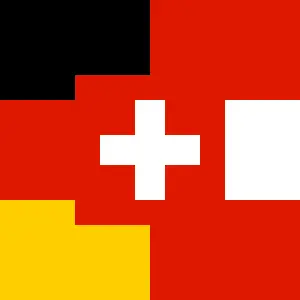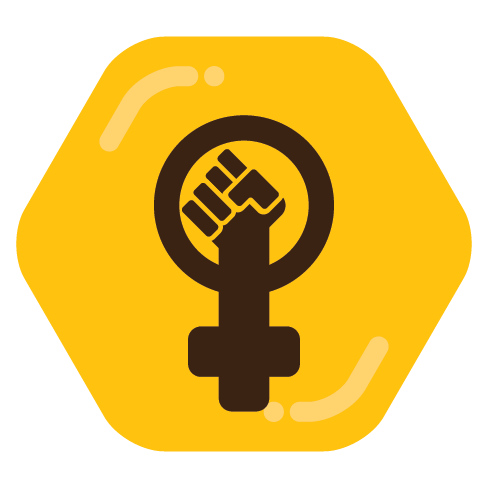

I’ve been using two different (refurbished) Pixel phones with CalyxOS for over 3 years now. It is a really great experience :) And the photos the phones can take are great, too!


I’ve been using two different (refurbished) Pixel phones with CalyxOS for over 3 years now. It is a really great experience :) And the photos the phones can take are great, too!


Also mir hats geholfen, wusste ich noch nicht!


Haha, mein neurodivergentes Gehirn hat tatsächlich ernsthaft darüber nachgedacht. Daher weiß ich jetzt folgendes:
Das erste bekannte Konzept für ein Semesterticket wurde 1990 an der Universität Stuttgart entwickelt. Die erste Vereinbarung für ein Semesterticket kam an der damaligen FH Darmstadt (heute Hochschule Darmstadt) für das Wintersemester 1991/92 im Frankfurter Verkehrsverbund zustande.
Von Wikipedia


Jetzt frage ich mich, ob es 1961 wohl schon Semestertickets gab??
Indeed, basic plant morphology knowledge plus some local Floras and iNaturalist worked out quite well for me in the tropics. There are also so many people that know plants on iNat. You only get into trouble if you try to ID rare species, but that’s also the case in the temperate zones.


Vor allem weil die Würze viel entscheidender ist als welches Hack du verwendest. Wenn ich ne lecker schmeckende Bolo möchte, mache ich da Lorbeer, Rotwein und sonst halt nicht viel Schickschnack mit rein. Dann ist fast egal, ob ich Tofu, Sojagranulat oder das vegane Hack aus dem Kühlregal nehme. Und das gute an veganer Ernährung ist, dass du kreativ sein musst und neue Sachen findest. Ich habe mehrerer Standard-Bolognesen, die alle unterschiedlich schmecken. Linsenbolognese mit Paprika und Pilzen drin, dann schön abgeschmeckt mit frischem Salbei ist auch mega genial, aber halt viel fruchtiger als die eher klassischere Variante.


Typical trees belong to a group of plants called dicots
Whaaaat? Swiftly ignoring all gymnosperms? The temperate zones are full of trees that aren’t dicots, or even angiosperms! Focusing on some biological traits that aren’t crucial to the definition of a tree sounds like the author already likes their neat categories and wants to retroactively justify them…


Indeed, it simply is not a phylogenetic categorization but a physio-ecological one. Tree, like shrub, liana, herbaceous, woody/non-woody are all terms solely used to place plants into functional groups based on how they grow. None of these has to do with their taxonomy.
So the question is, what is a tree and is having secondary growth necessary to be one? Because monocots, like palms are, don’t have secondary growth, they use some workarounds. But why should that matter in the definition of a tree? I don’t know. So yeah, a coconut palm should be considered a tree. But it hasn’t got to do with phylogenetics (like explained in the article you linked).
Also, millennia ago there have been vast forests of lycopods!! Just imagine huge trees that are actually spikemosses. So why shouldn’t a palm not be a tree?
There are many other instances of doubled genus names in different Phyla, e.g. Polyura, Heteropsis, Ponera
Clopen is a really cute word!
The mushrooms from the bolete family here in Germany often stain blue (or some other color) when bruised but most are very good mushrooms for eating. For example, Imleria badia, Neoboletus erythropus and Suillus grevillei. The last one is even slimy but you can just remove the cap. (There is also this really tasty gill-having mushroom Lactarius deliciosus that stains green). Also, Armillaria can do bioluminescence but are also edible! I agree with checking for fungi infections of mushrooms and to learn to ID the deadly poisonous Amanita species (funnily enough, there are some really good edible ones in the same genus!).
Your guide to carefully test foraged organisms is definitely helpful. However, when foraging mushrooms you have to keep in mind some additional things. Many, if not most mushrooms are really toxic when eaten raw! People frequently get poisoned while eating edible mushrooms that are not cooked enough. They apparently often contain hemolysins. Also, there are a few tasty mushrooms that can be toxic if eaten in combination with alcohol. If you go foraging mushrooms, better try to learn some groups, how to distinguish them and what are their characteristics than trying to test by your body’s reaction. But yeah, if you were to be without any food in the wild maybe it helps to know how to test for edibility.
Many trees can regrow quite drastically when cut back. Even stumps resprout in various tree species. But fungal infections can really take a toll on trees, so any wound is certainly a risk. So there is some truth to the meme, it is just hyperbolic.


Wow, those conditions sound so incredibly harsh! Must have been such a phenomenal feeling when they’ve arrived and even broken the world record :)
Ah OK, really depends where you live. In Germany, for example, the liberal party is notoriously anti-left and usually allies with the main conservative, right-wing party. When it was founded after WW2 many Nazis joined it.
And it also depends what you mean by left vs right wing. In the US, the democrat party may be considered left leaning? But in comparison to many European left wing parties, it might be more of a centrist or even right-wing party. None of these terms can be really pin pointed down to an exact meaning and they are usually relative to other positions surrounding them. For me, defining liberal as market liberal seems like the most sensible definition, but then you might consider the US american Republican party to be liberal as well? Confusing!
And what is extremist left wing? Some people even consider human rights and medical care for everyone to be extremist left. Again, these terms always go in relation to other position like described via the overton window.
Cannot tell if this is meant sarcastically? Probably?
Just in case you are serious:
Often debated because neither is well defined and liberal is used by different people to mean totally different things. As I would use the term, liberals are in favor of liberating markets and nothing else. Leftists are people who are in favor of progressive and emancipatory politics. So for me, liberals are definitely no leftists.


Sure, I can agree that the NATO is considerably worse than countries. I still think that there shouldn’t be any country flags on spaces like this and that patriotism will always lead to nationalism and then to fascism.
Hard to spot and people might take it at face value.
Yeah, I feel that!